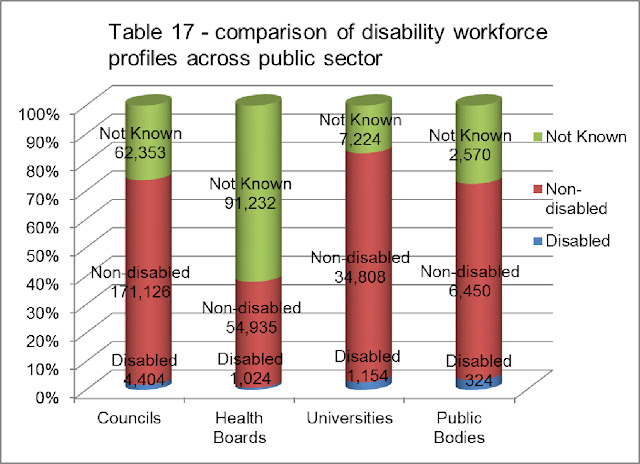Recent research into equal pay gaps across the public sector has looked at what if anything the sector has been doing to remove discrimination from the pay of those workers who identify as disabled. The research also gathered data on the profile of public sector workforces, by gender, ethnicity and disability.
The ability of disabled people to obtain and sustain paid
work opportunities is a decades-old challenge, and an area where the public
sector has been expected to lead the way in dismantling barriers,
discrimination and prejudice. The
evidence provided by the public sector itself in the shape of this comparative
analysis of two research studies into equal pay for people with disabilities
would suggest the sector has made little progress.
Government's own draft Equality Outcomes use an estimate of 23% as being the proportion of adults of working age who are disabled.
Looked at another way, the best performer at 3.47% is only 1/6th of the way towards having a workforce profile representative of the available adult population. The worst performers, Health Boards, have barely crossed the line in having 1/32nd of the profile they should have if discrimination was removed.

No comments:
Post a Comment